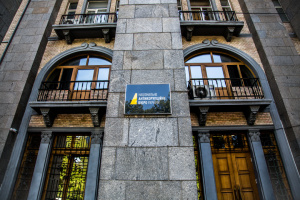
Poll reveals Ukrainian parties with highest support rate
That’s according to a survey run by the Razumkov Center, Ukrinform reports.
If the elections to the Verkhovna Rada of Ukraine took place in the near future, the Servant of the People party would receive the greatest support (14% of all respondents or 22% of those who will take part in the elections and have already made their electoral choice). Another 10% and 16% of respondents, respectively, are ready to vote for the European Solidarity. Some 8% and 13%, respectively, would cast ballots for the Opposition Platform - for Life (OPZZh ) party, and 7% and 11% – for the Motherland party, the poll says.
Only 4% of all respondents or 6% of those who have made their choice are set to vote for the Nashi party; 4% and 6%, respectively – for the Strength and Honor party, 2% and 4% – for Groysman’s Ukrainian Strategy, 2% and 3% – for Civic Position, 2% and 2.5% – for the Radical Party of Oleh Lyashko, 2% and 2% – for Serhiy Prytula's party, 1% and 2% – for the Svoboda, 1% and 2% – for Sharij’s Party, 1% and 1% – for Vitaly Kltschko's UDAR party, while other political forces would gain below 1%.
At the same time, sociologists note that, against late July - early August 2021, the electoral support of the ruling Servant of the People party decreased from 17% to 14% among all respondents. Compared to January 2021, the level of electoral support of the OPZZh party dropped from 14% to 8%, which can be partly explained by the emergence in the poll of the Nashi party, which focuses on the same target audience as the OPZZh.
Also, compared to January 2021, the electoral support of the Voice party and the Opposition Bloc decreased at a statistically significant level (from 2% to 0.3% and from 0.9% to 0.3%, respectively), which also can be partly explained by the appearance in the questionnaire of Serhiy Prytula's Party and the Nashi party.
The level of electoral support of other political parties has not changed at a statistically significant level since year-start.
The survey was conducted October 14-20 through front door face-to-face interviews. A total of 2,018 respondents aged 18 and over were interviewed in all regions of Ukraine, except for Crimea and the occupied territories of Donetsk and Luhansk regions, by a sample representing the adult population. The theoretical sampling error (excluding the design effect) is within 2.3% with a probability of 0.95.
im




